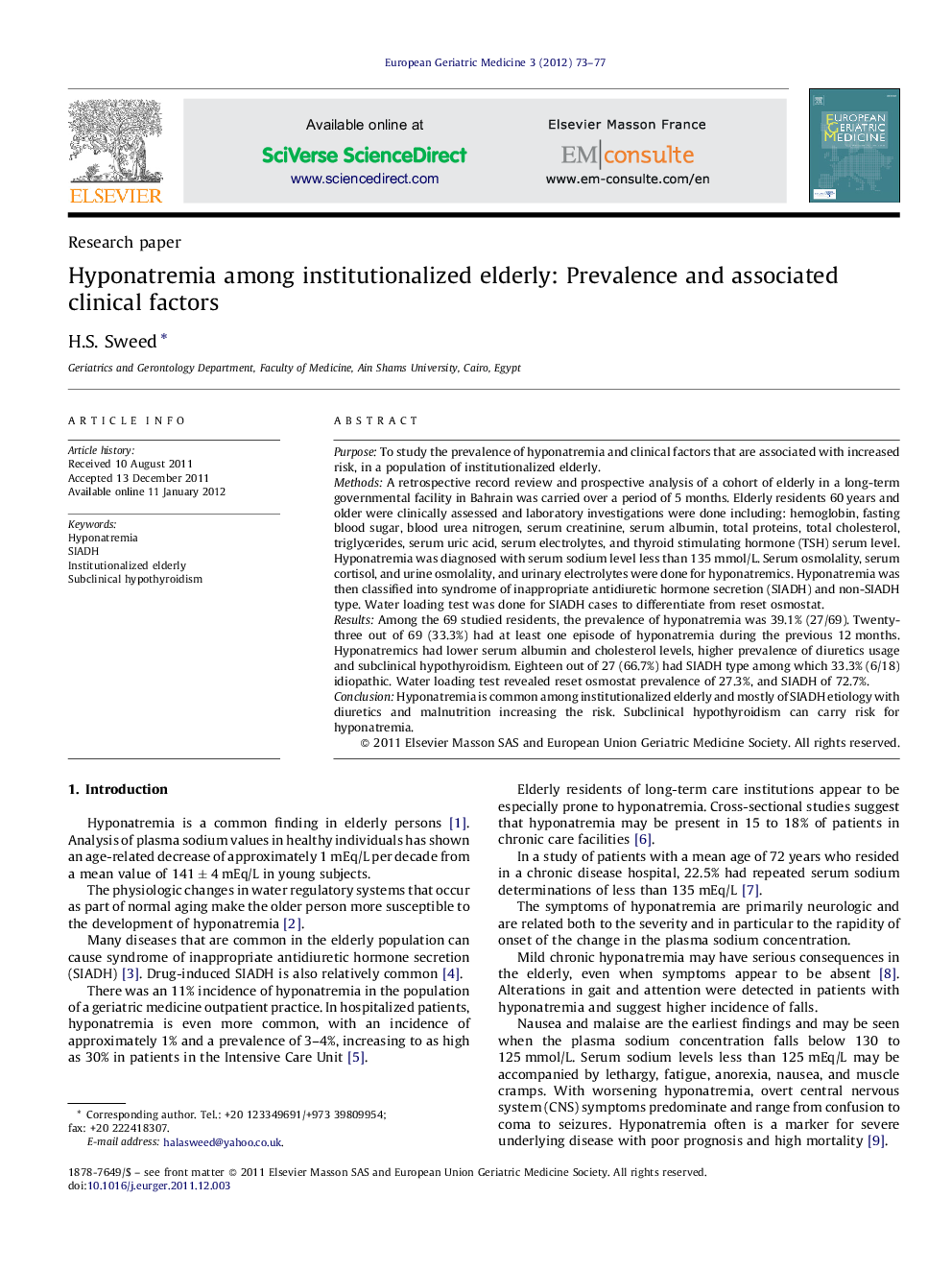| Article ID | Journal | Published Year | Pages | File Type |
|---|---|---|---|---|
| 3324551 | European Geriatric Medicine | 2012 | 5 Pages |
PurposeTo study the prevalence of hyponatremia and clinical factors that are associated with increased risk, in a population of institutionalized elderly.MethodsA retrospective record review and prospective analysis of a cohort of elderly in a long-term governmental facility in Bahrain was carried over a period of 5 months. Elderly residents 60 years and older were clinically assessed and laboratory investigations were done including: hemoglobin, fasting blood sugar, blood urea nitrogen, serum creatinine, serum albumin, total proteins, total cholesterol, triglycerides, serum uric acid, serum electrolytes, and thyroid stimulating hormone (TSH) serum level. Hyponatremia was diagnosed with serum sodium level less than 135 mmol/L. Serum osmolality, serum cortisol, and urine osmolality, and urinary electrolytes were done for hyponatremics. Hyponatremia was then classified into syndrome of inappropriate antidiuretic hormone secretion (SIADH) and non-SIADH type. Water loading test was done for SIADH cases to differentiate from reset osmostat.ResultsAmong the 69 studied residents, the prevalence of hyponatremia was 39.1% (27/69). Twenty-three out of 69 (33.3%) had at least one episode of hyponatremia during the previous 12 months. Hyponatremics had lower serum albumin and cholesterol levels, higher prevalence of diuretics usage and subclinical hypothyroidism. Eighteen out of 27 (66.7%) had SIADH type among which 33.3% (6/18) idiopathic. Water loading test revealed reset osmostat prevalence of 27.3%, and SIADH of 72.7%.ConclusionHyponatremia is common among institutionalized elderly and mostly of SIADH etiology with diuretics and malnutrition increasing the risk. Subclinical hypothyroidism can carry risk for hyponatremia.
